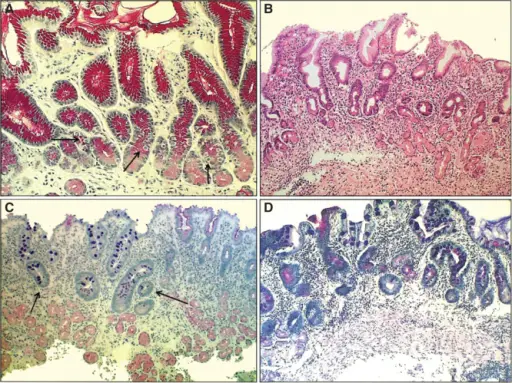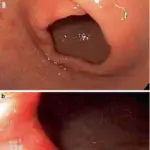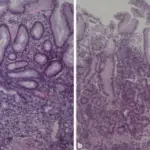Chronic gastritis is a long-term condition in which the mucus lined layer of the stomach, also known as the gastric mucosa, is inflamed or irritated over a longer period of time. Symptoms tend to appear slowly, over time.
What is the Pathology of Chronic Gastritis?
The pathology of chronic gastritis is:
-Etiology: The cause of chronic gastritis is: the presence of bacteria H. pylori, long-term use of certain medications aspirin and ibuprofen,excessive alcohol consumption, certain illnesses diabetes or kidney failure, a weakened immune system.
-Genes involved: c-Myc and p53.
-Pathogenesis: The sequence of events that lead to chronic gastritis are the continuous mucosal injury due to long-standing H. pylori infection, leads to atrophy of stomach. This continuous pathological process results in erosion or ulceration of the mucosa leading to the destruction of the glandular layer and followed by fibrous replacement.
-Histology: The histology associated with chronic gastritis shows inflammatory infiltrates of neutrophils localized on the foveolar layer stroma of gastric mucous membrane in the case of acute gastritis. Chronic gastritis is characterized by an infiltrate of lymphoid cells, plasmatic cells and acidophilic granulocytes.
How does Chronic Gastritis Present?
Patients with chronic gastritis typically all sexes at older age. The symptoms, features, and clinical findings associated with chronic gastritis include: upper abdominal pain, Indigestion, bloating, nausea, vomiting, belching, loss of appetite, weight loss.
How is Chronic Gastritis Diagnosed?
Chronic gastritis is diagnosed by an endoscopy, in which a camera attached to a long tube is inserted into your mouth and down into your digestive tract, a test for the bacteria that cause stomach ulcers, a stool test to look for stomach bleeding, a blood count and an anemia test.
How is Chronic Gastritis Treated?
Chronic gastritis is treated by: medications antacids, including calcium carbonate Rolaids and Tums, proton pump inhibitors, and diet.
What is the Prognosis of Chronic Gastritis?
The prognosis of chronic gastritis is good. The prognosis of chronic gastritis is strongly related to the underlying cause.



